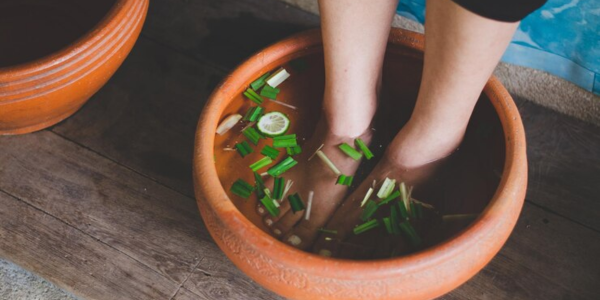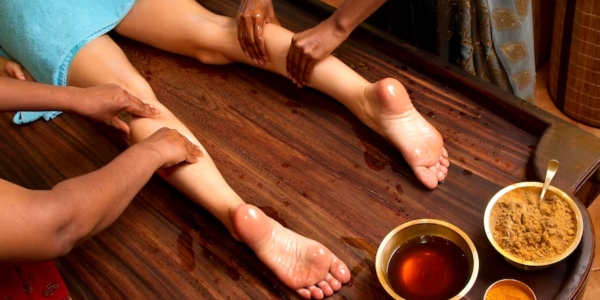Swelling Reducer for Feet and Legs Home Remedies | Natural Relief Tips
Swelling Reducer for Feet and Legs: 15 Proven Home Remedies That Actually Work

If your feet and legs feel heavy, tight, or ballooned at the end of the day, you’re not alone. Swelling in the lower limbs medically known as peripheral edema is a common issue affecting millions of people worldwide.
While occasional swelling might be harmless, persistent or painful swelling could indicate an underlying condition.
Fortunately, you don’t always need a prescription to get relief. There are safe, effective home remedies that act as natural swelling reducers and they’re often already in your kitchen or medicine cabinet.
In this guide, we’ll break down:
- Why swelling happens in the feet and legs
- Signs your swelling could be serious
- 15 effective home remedies for reducing swelling
- Lifestyle changes that support healthy circulation
- When to see a doctor
Why Do Feet and Legs Swell?
Swelling occurs when excess fluid collects in the tissues, usually due to poor circulation, inflammation, or lymphatic blockage. It can be triggered by:
- Prolonged standing or sitting
- Injury or trauma
- Pregnancy
- Heat exposure
- Chronic conditions like lymphedema, venous insufficiency, or kidney disease
- Medication side effects (e.g., NSAIDs, steroids, calcium channel blockers)
Understanding the root cause is critical for effective treatment but for many, lifestyle changes and natural home remedies can significantly reduce swelling and improve comfort.
When Should You Worry About Leg or Foot Swelling?
While most cases are harmless and resolve on their own, see a doctor if you experience:
- Sudden, unexplained swelling in one leg
- Swelling with chest pain or shortness of breath
- Skin discoloration or ulcers
- Persistent pain, numbness, or tingling
- Swelling that doesn’t improve with rest
Now, let’s look at how you can treat mild-to-moderate swelling naturally at home.
15 Home Remedies That Reduce Swelling in Feet and Legs
These natural remedies can help move fluid out of your tissues, improve circulation, and reduce inflammation right from home.
1. Elevate Your Legs
- How it helps: Elevating your legs above heart level for 20-30 minutes helps gravity drain excess fluid back toward the heart.
- What to do: Lie flat on a couch or bed and prop your legs up on pillows or a wall. Aim to elevate 2–3 times daily.
- Best for: Swelling due to gravity, prolonged sitting, or standing.
2. Epsom Salt Foot Soak
- How it helps: Epsom salts contain magnesium sulfate, which may reduce inflammation and encourage fluid drainage.
- What to do: Add 1/2 cup of Epsom salt to a basin of warm water. Soak your feet for 15–20 minutes.
- Pro tip: Add a few drops of lavender oil for relaxation benefits.
3. Cold Compresses
- How it helps: Cold constricts blood vessels and reduces inflammation.
- What to do: Wrap an ice pack in a cloth and apply it to swollen areas for 10–15 minutes. Avoid direct ice contact with skin.
- When to use: After injury, or when swelling is accompanied by pain or redness.
4. Massage with Essential Oils

- How it helps: Gentle massage encourages lymphatic drainage and improves circulation. Essential oils like peppermint, eucalyptus, or cypress have natural anti-inflammatory properties.
- What to do: Mix 2–3 drops of essential oil with a tablespoon of carrier oil (like coconut or almond oil). Massage upward toward the heart in gentle strokes.
5. Compression Socks
- How it helps: These snug-fitting socks provide graduated pressure, helping blood and lymph flow efficiently out of the legs.
- When to wear: During the day, especially if you sit or stand for long periods. Avoid at night unless prescribed.
- Tip: Choose medical-grade compression (15–30 mmHg) for noticeable results.
6. Drink More Water
- Counterintuitive, but true: Dehydration causes the body to hold on to fluid. Drinking more water can actually flush out excess sodium and reduce swelling.
- Aim for: 8–10 glasses per day, or more in hot weather or if you’re active.
7. Magnesium-Rich Foods
- How it helps: Magnesium regulates fluid balance and can reduce water retention.
- Foods to try:
- Dark leafy greens
- Avocados
- Bananas
- Almonds
- Pumpkin seeds
- Bonus: Magnesium supplements (consult your doctor first) may also help with fluid retention related to PMS or certain medications.
8. Apple Cider Vinegar Wraps
- Why it works: Apple cider vinegar (ACV) is believed to draw out toxins and excess fluid from swollen tissues.
- What to do:
- Mix equal parts ACV and warm water
- Soak a cloth in the solution and wrap it around your feet or legs
- Leave it for 20–30 minutes
- Tip: Use organic, unfiltered ACV for best results.
9. Reduce Salt Intake
- Too much sodium = fluid retention. The average person consumes far more than the recommended 2,300 mg daily.
- Tips to cut salt:
- Avoid processed foods
- Check labels (even on “healthy” snacks)
- Cook with herbs and spices instead of salt
10. Gentle Stretching and Walking
- Why it helps: Movement promotes lymph flow and prevents fluid from pooling in the legs.
- Try:
- Ankle pumps
- Calf stretches
- Short walks every hour if seated
- Pro tip: Yoga poses like “Legs Up the Wall” are especially effective.
11. Dandelion Tea
- Nature’s diuretic: Dandelion tea helps your kidneys excrete excess sodium and water, reducing swelling.
- How to use: Brew one cup 1–2 times daily. You can find organic dandelion root tea at health food stores.
- Caution: Avoid if you have kidney issues or take diuretics already.
12. Tonic Water Foot Soak
- A surprising trick: The quinine and carbonation in tonic water may reduce inflammation and soothe tired feet.
- Instructions: Soak feet in cold tonic water for 15–20 minutes.
13. Bitter Gourd or Cucumber Paste
- Cooling and anti-inflammatory: These vegetables can be mashed into a paste and applied to swollen areas.
- Instructions: Leave the paste on for 10–15 minutes, then rinse with cool water.
13. Turmeric Paste or Tea
- Anti-inflammatory powerhouse: Turmeric reduces swelling naturally thanks to its active compound curcumin.
- Ways to use:
- Mix turmeric powder with water and apply as a paste
- Drink golden milk (turmeric + milk + honey)
- Take curcumin capsules (consult with your provider)
15. Hydrotherapy (Contrast Baths)
- Alternate hot and cold water exposure boosts circulation and reduces inflammation.
- Instructions:
- Soak feet in warm water for 3 minutes
- Switch to cold water for 1 minute
- Repeat 3–4 cycles
Lifestyle Changes That Help Prevent Swelling
Aside from targeted remedies, these habits make a big difference:
- Maintain a healthy weight to reduce pressure on veins
- Limit alcohol which contributes to dehydration and water retention
- Avoid prolonged sitting move every 30–60 minutes
- Sleep with your legs slightly elevated using a wedge pillow
- Wear supportive footwear that doesn’t restrict circulation
Special Considerations
- Pregnancy: Swelling is common, especially in the third trimester. The remedies above are generally safe, but always check with your OB-GYN before trying herbal remedies or essential oils.
- Diabetes: If you have diabetes, foot swelling can be a sign of poor circulation or nerve damage. Daily foot checks and prompt attention to swelling are critical.
- Heart or Kidney Disease: Persistent leg swelling may indicate fluid overload. In such cases, home remedies should not replace medical treatment.
Final Thoughts
Swelling in the feet and legs can be uncomfortable, frustrating, and sometimes even alarming but it doesn’t have to control your life.
With the right combination of home remedies and simple lifestyle adjustments, you can significantly reduce swelling and improve your day-to-day comfort.
From elevating your legs and using Epsom salt soaks to staying hydrated and wearing compression socks, small changes can lead to big improvements.
.